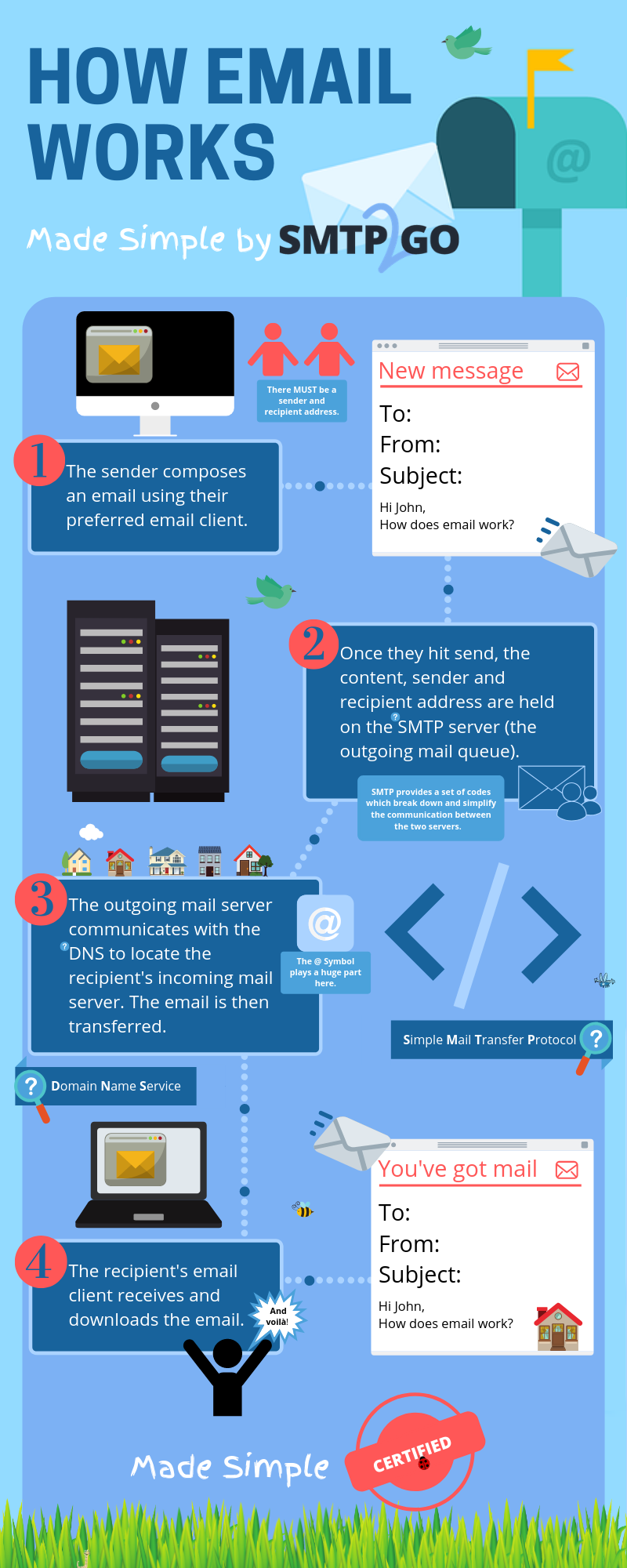Introduction to Email
- Email is abbreviated as ELECTRONIC MAIL.- Email is used to exchange(i.e. Send and receive)mails across internet.
- Email is a message that may contain text, files ,image or other attachments sent through a network to are specified you individual or group of individuals.
- from year 2000 onwards, electronic mail was a preferred medium over postal mail.
- Email is one of the ways on internet to send message to another person across the network.
Advantages of email
- E-mail is faster than postal mail.
- E-mail cannot be lost like letters and can be stored for lifelong.
- It can be edited and forwarded to other users.
- Email are not affected by distance. It can be sent anywhere in the world seconds unlike postal emails.
- You can add video and audio with the e-mail.
- Privacy : Your email is delivered to your own personal and private account with a password required to access and view emails.
- A valid mail is required to access to Web Services some shopping sites like Amazon Flipkart. Email is also required for social networking sites like Facebook.
Disadvantages of email
- There must be computer or alternatively suitable mobiles devices and network connection should be available at the sender and recipient unlike postal mails.
- There is a need of knowledge of opening email account and how can be sent.
History of E-mail
Internet based e-mail was designed by a computer engineer - Ray Tomlinson in late 1971 while working with ARPANET. Tomlinson used a file transfer protocol to send electronic message to any computer on the ARPANET network. The first email was sent between two computers that were actually sitting besides each other but connected through ARPANET.
The first important email standard was called SMTP or simple message transfer protocol. SMTP was very simple and if still in use - however, SMTP has a problem it makes no attempt to find out whether the person claiming to have sent a message is actually the same person. This basic flaw in the protocol was later to be exploited by viruses and worms, and by security frauds and spammers for forging identities. Some of these problems are still being addressed.
In 2004 ,when internet standards for email begin to mature the POP(Post office protocol) serves began to prepare as a standard -before that each server was a little different. POP was an important standard to allow users to develop mail
that would work with each other.
Now internet mails is defined by a large number of standard and recommendations by the Internet Engineering Task Force (IETF). However only, a few of protocols used in Internet mails are full IETF standards. Most of these standards are begin used by for people writing Internet mail software.
How Emails Works
Email Protocols
- Sending Emails
- SMTP (Simple Mail Transfer Protocol)
- Receiving Emails
- POP3( Post Office Protocol version 3)
- IMAP4( Internet Mail Access Protocol version 4)
POP3 is meant to be used if you own an individual device.
IMAP is designed to be used on different devices.

How to access your emails ?
They are:
- Webmail is a web-based email brewers, the examples are Gmail, Yahoo mail and AOL(that is America online).
- An Email Client is a computer program( or an application) used to access user`s email
- The Examples of Email Client are Microsoft Outlook, Mozilla Thunderbird and MAC based Airmail.


No comments:
Post a Comment